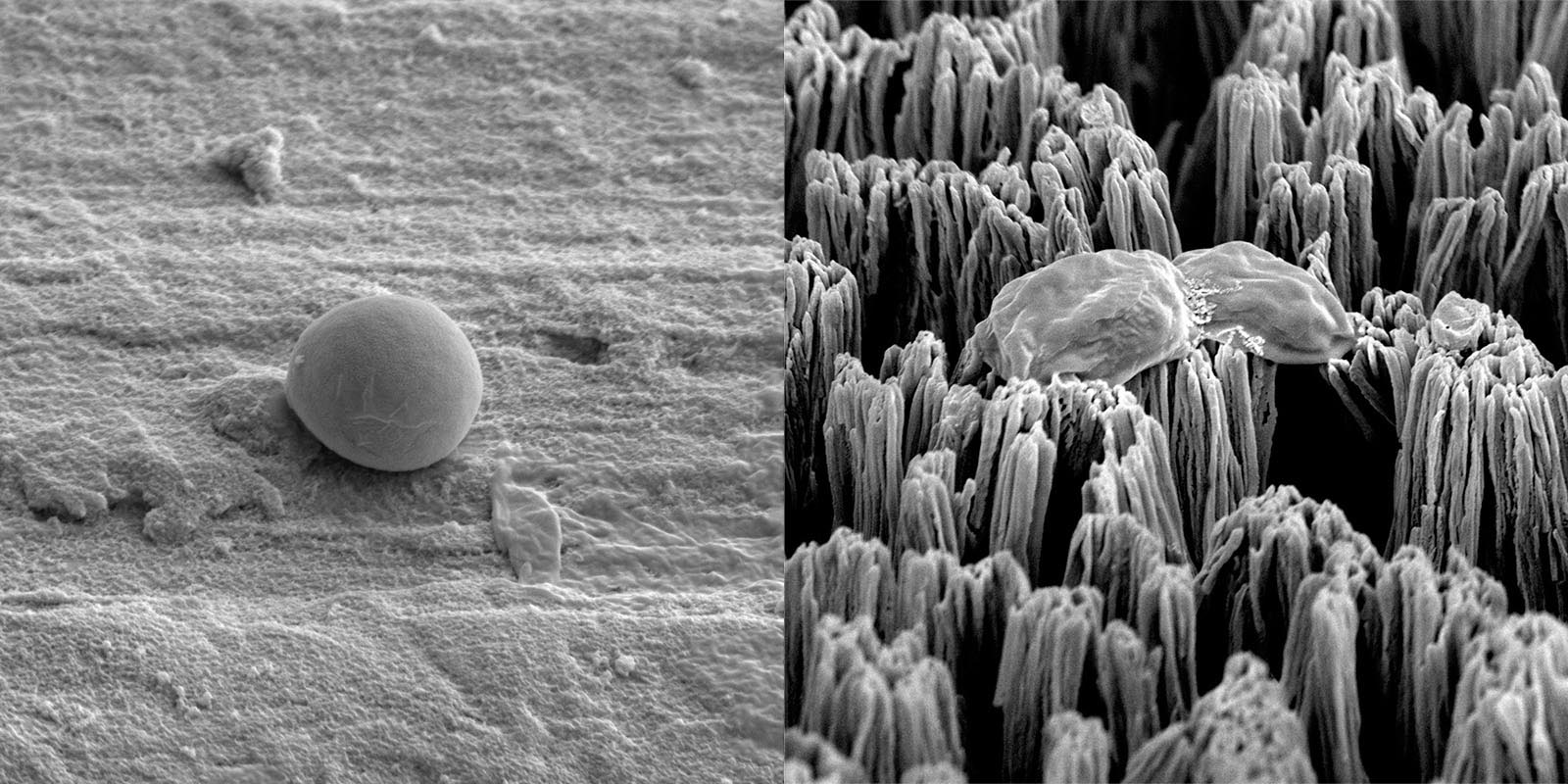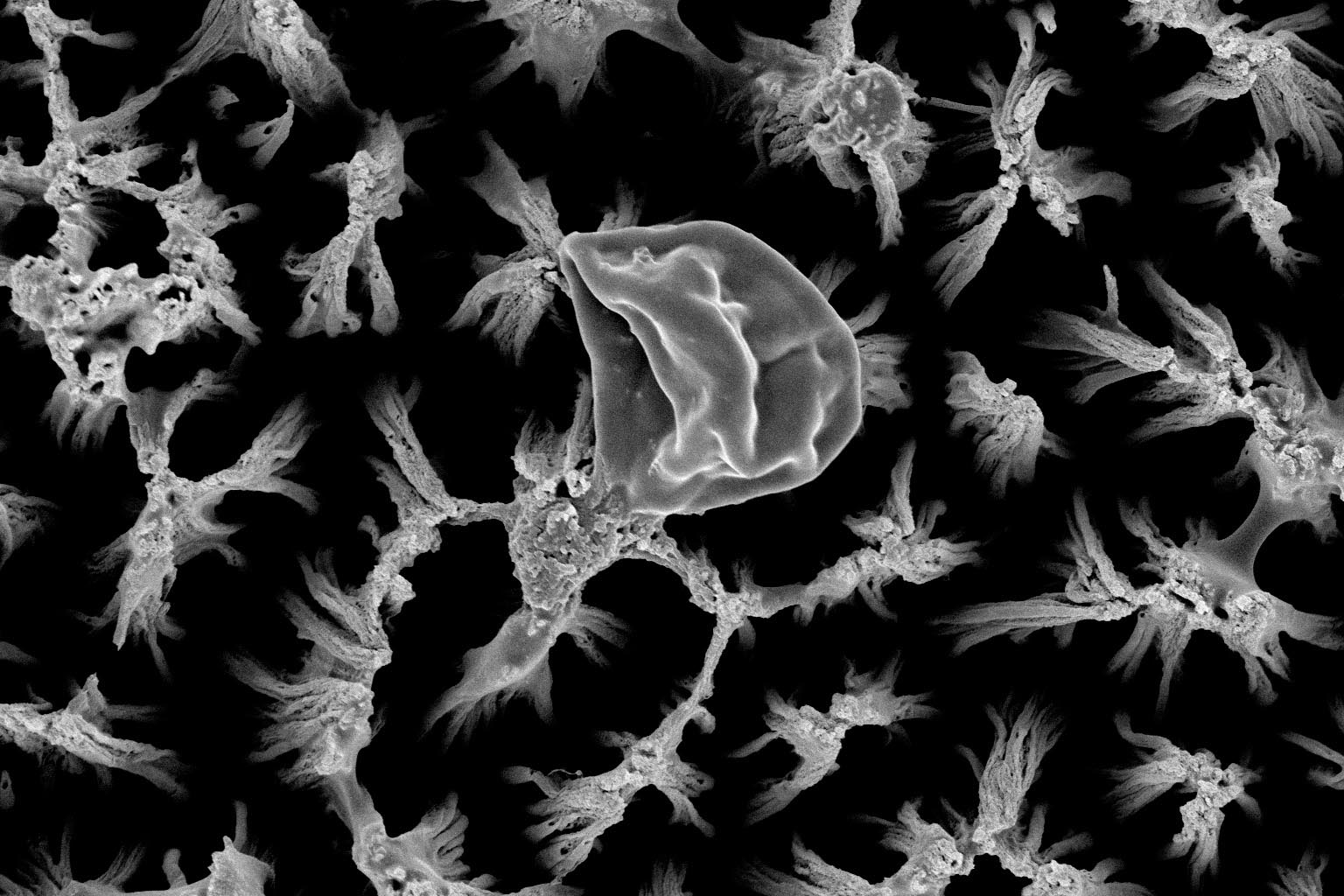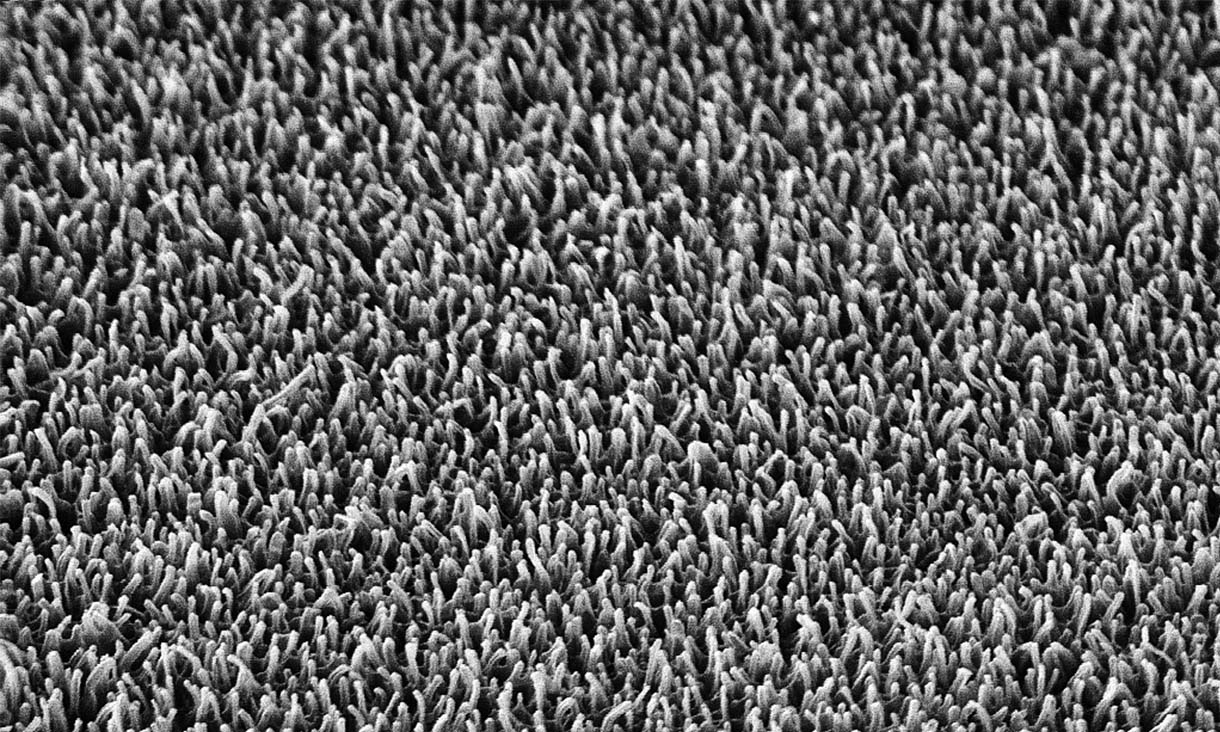| Aug 29, 2023 |
Titanium micro-spikes skewer resistant superbugs
(Nanowerk News) The increasing rates of drug-resistant infection has health experts globally concerned.
|
|
To avoid infection around implants – such as titanium hips or dental prosthesis – doctors use a range of antimicrobial coatings, chemicals and antibiotics, but these fail to stop antibiotic-resistant strains and can even increase resistance.
|
|
To address these challenges, RMIT University scientists have designed a pattern of microscale spikes that can be etched onto titanium implants or other surfaces to provide effective, drug-free protection from both bacteria and fungus.
|
|
The team’s study published in Advanced Materials Interfaces ("Apoptosis of Multi-Drug Resistant Candida Species on Microstructured Titanium Surfaces") tested the effectiveness of the altered titanium surface in killing multi drug-resistant Candida – a potentially deadly fungus responsible for one in 10 hospital-acquired medical device infections.
|
 |
| An intact Candida cell on polished titanium surface (left), and a ruptured Candida cell on the micro-spiked titanium surface (right). (Image: RMIT University)
|
|
The specially designed spikes, each of a similar height to a bacteria cell, destroyed about half the cells soon after contact.
|
|
Significantly, the other half not immediately destroyed were rendered unviable from the injuries sustained, unable to reproduce or cause infection.
|
|
Lead Postdoctoral researcher, Dr Denver Linklater, said metabolic analysis of protein activity revealed both the Candida albicans and multi-drug resistant Candida auris fungi cells sitting injured on the surface were as good as dead.
|
|
“The Candida cells that were injured underwent extensive metabolic stress, preventing the process where they reproduce to create a deadly fungal biofilm, even after seven days,” said Linklater, from RMIT’s School of Science.
|
|
“They were unable to be revived in a non-stress environment and eventually shut down in a process known as apoptosis, or programmed cell death.”
|
|
The surface's effectiveness against common pathogenic bacteria including golden staph was demonstrated in an earlier study published in Materialia ("Mechanical inactivation of Staphylococcus aureus and Pseudomonas aeruginosa by titanium substrata with hierarchical surface structures").
|
|
Group leader, Distinguished Professor Elena Ivanova, said the latest findings shed light on the design of antifungal surfaces to prevent biofilm formation by dangerous, multi-drug resistant yeasts.
|
|
“The fact that cells died after initial contact with the surface – some by being ruptured and others by programmed cell death soon after – suggests that resistance to these surfaces will not be developed,” she said.
|
|
“This is a significant finding and also suggests that the way we measure the effectiveness of antimicrobial surfaces may need to be rethought.”
|
|
Advances have been made over the past decade in designing surfaces that kill superbugs on contact. However, finding the right types of surface patterns to eliminate 100% of microbes so some don’t survive to become resistant is an ongoing challenge.
|
|
“This latest study suggests that it may not be entirely necessary for all surfaces to eliminate all pathogens immediately upon contact if we can show that the surfaces are causing programmed cell death in the surviving cells, meaning they die regardless,” she said.
|
 |
| A ruptured Candida cell on top of the titanium micro-spikes, magnified 25,000 times. (Image: RMIT University)
|
Leading the way in bioinspired solutions
|
|
RMIT’s Multifunctional Mechano-biocidal Materials Research Group has led the world for over a decade in the development of antimicrobial surfaces inspired by the nanopillars covering dragonfly and cicada wings.
|
|
Ivanova herself was among the first to observe how when bacteria settle on an insect wing, the pattern of nanopillars pulls the cells apart, fatally rupturing the membranes.
|
|
“It’s like stretching a latex glove,” Ivanova said. “As it slowly stretches, the weakest point in the latex will become thinner and eventually tear.”
|
|
Her team have spent the past decade replicating these insects’ nanopillars in nanopatterns of their own, with this latest advance achieved using a technique called plasma etching to create the antibacterial and antifungal pattern in titanium.
|
 |
| The nanopillars on the surface of a dragonfly wing, magnified 20,000 times. (Image: RMIT University)
|
|
Ivanova said the relatively simple etching technique could be optimised and applied to a wide range of materials and applications.
|
|
“This new surface modification technique could have potential applications in medical devices but could also be easily tweaked for dental applications or for other materials like stainless steel benches used in food production and agriculture,” she said.
|
Industry collaboration
|
|
Study lead author and joint PhD candidate with RMIT and the ARC Research Hub for Australian Steel Manufacturing, Phuc Le, said working closely with industry partner BlueScope Steel helped focus efforts to practical solutions for industry.
|
|
“Collaborating with industrial partners has been a transformative aspect of my PhD journey,” he said.
|
|
“Their first-hand insights as manufacturers have provided clarity on the challenges their products face and opened doors for me to research and devise practical solutions."
|
|
"While our studies are in the preliminary stages, the prospects for product optimisation are promising.”
|



